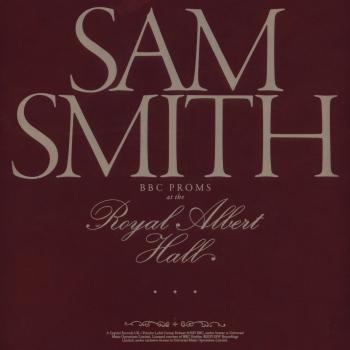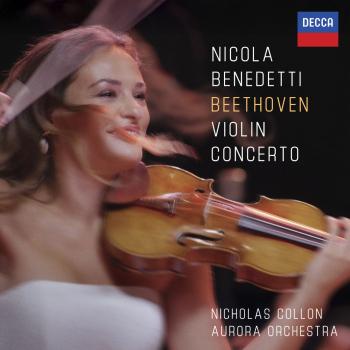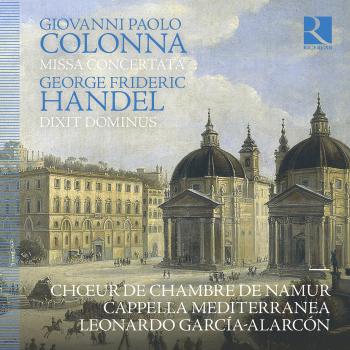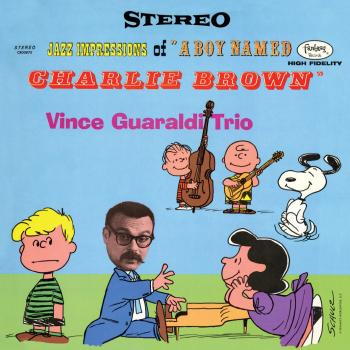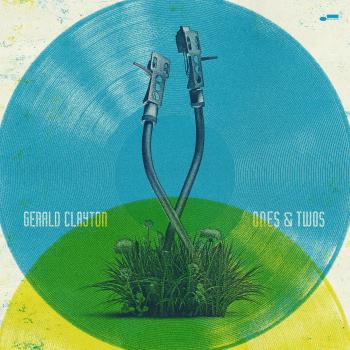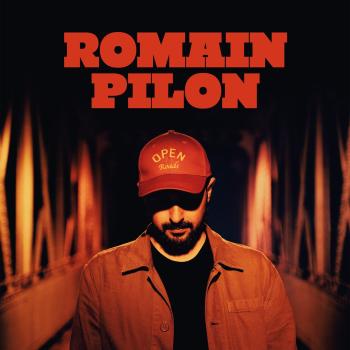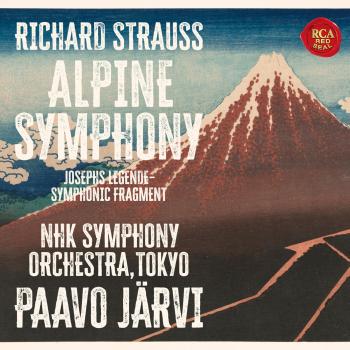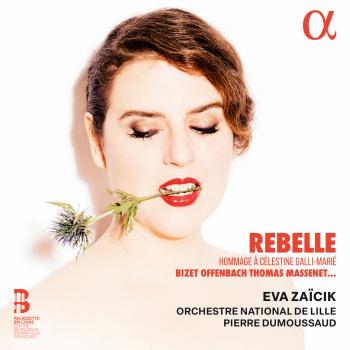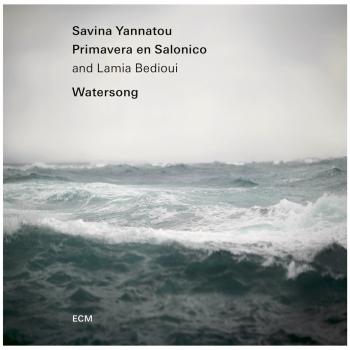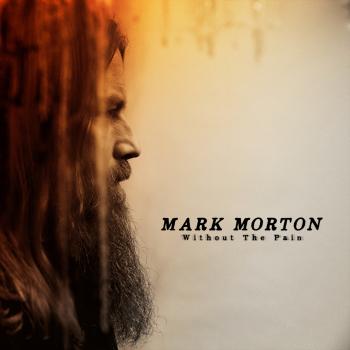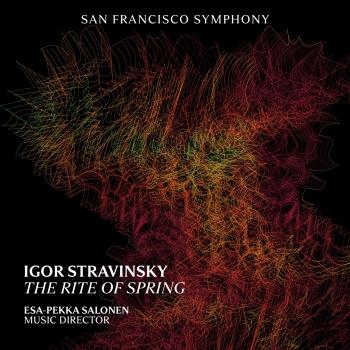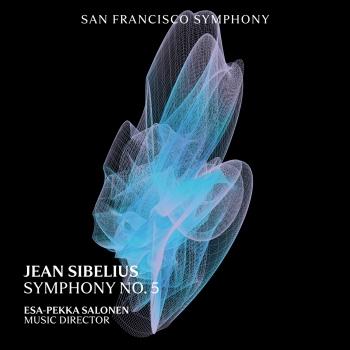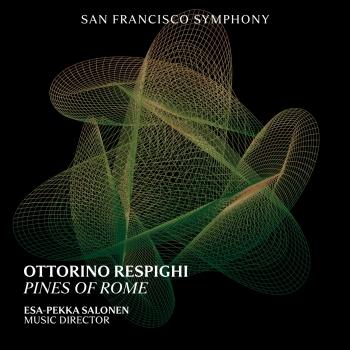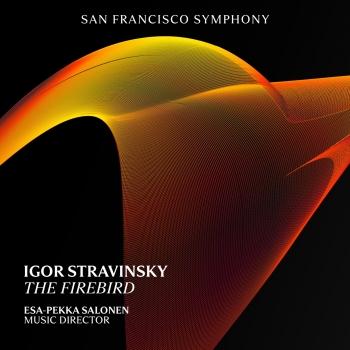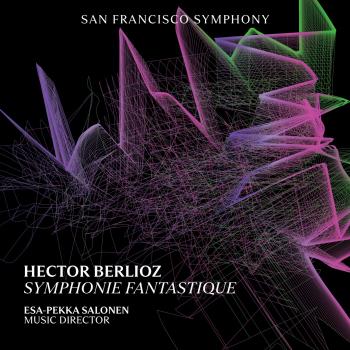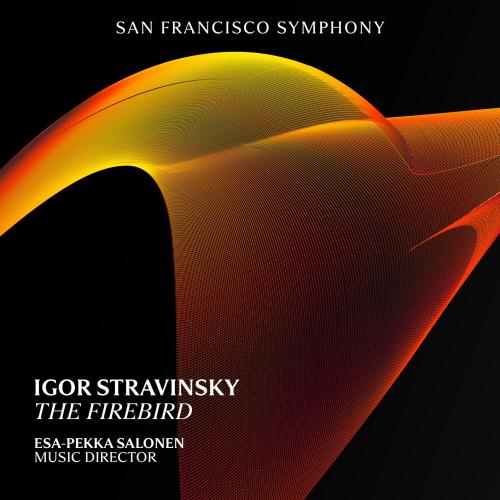
Stravinsky: The Firebird San Francisco Symphony & Esa-Pekka Salonen
Album info
Album-Release:
2024
HRA-Release:
27.09.2024
Label: SFS Media
Genre: Classical
Subgenre: Orchestral
Artist: San Francisco Symphony & Esa-Pekka Salonen
Composer: Igor Stravinsky (1882–1971)
Album including Album cover
I`m sorry!
Dear HIGHRESAUDIO Visitor,
due to territorial constraints and also different releases dates in each country you currently can`t purchase this album. We are updating our release dates twice a week. So, please feel free to check from time-to-time, if the album is available for your country.
We suggest, that you bookmark the album and use our Short List function.
Thank you for your understanding and patience.
Yours sincerely, HIGHRESAUDIO
- Igor Stravinsky (1882 - 1971): The Firebird, K010:
- 1 Stravinsky: The Firebird, K010: I. Introduction (1910 Version) 02:54
- 2 Stravinsky: The Firebird, K010: II. Kashchei’s Enchanted Garden (1910 Version) 01:11
- 3 Stravinsky: The Firebird, K010: III. Appearance of the Firebird pursued by Ivan Tsarevich (1910 Version) 02:13
- 4 Stravinsky: The Firebird, K010: IV. Dance of the Firebird (1910 Version) 01:20
- 5 Stravinsky: The Firebird, K010: V. Ivan Tsarevich Captures the Firebird (1910 Version) 00:52
- 6 Stravinsky: The Firebird, K010: VI. Supplication of the Firebird (1910 Version) 06:33
- 7 Stravinsky: The Firebird, K010: VII. Appearance of the Thirteen Enchanted Princesses (1910 Version) 02:29
- 8 Stravinsky: The Firebird, K010: VIII. Game of the Princesses with the Golden Apples (1910 Version) 02:25
- 9 Stravinsky: The Firebird, K010: IX. Sudden Appearance of Ivan Tsarevich (1910 Version) 01:17
- 10 Stravinsky: The Firebird, K010: X. Khorovod of the Princesses (1910 Version) 05:07
- 11 Stravinsky: The Firebird, K010: XI. Daybreak (1910 Version) 01:29
- 12 Stravinsky: The Firebird, K010: XII. Magic Carillon: Appearance of Kashchei’s Guardian Monsters Capture of Ivan Tsarevich (1910 Version) 01:14
- 13 Stravinsky: The Firebird, K010: XIII. Arrival of Kashchei the Immortal (1910 Version) 01:01
- 14 Stravinsky: The Firebird, K010: XIV. His Dialogue with Ivan Tsarevich (1910 Version) 01:04
- 15 Stravinsky: The Firebird, K010: XV. Intercession of the Princesses (1910 Version) 01:25
- 16 Stravinsky: The Firebird, K010: XVI. Appearance of the Firebird (1910 Version) 00:32
- 17 Stravinsky: The Firebird, K010: XVII. Dance of Kashchei’s Retinue Under the Firebird’s Spell (1910 Version) 00:46
- 18 Stravinsky: The Firebird, K010: XVIII. Infernal Dance of all Kashchei’s Subjects (1910 Version) 04:41
- 19 Stravinsky: The Firebird, K010: XIX. Lullaby (1910 Version) 04:22
- 20 Stravinsky: The Firebird, K010: XX. Kashchei’s Death (1910 Version) 01:50
- 21 Stravinsky: The Firebird, K010: XXI. Disappearance of the Palace and Dissolution of Kashchei’s Enchantments Animation of the Petrified Warriors General Thanksgiving (1910 Version) 03:42
Info for Stravinsky: The Firebird
A groundbreaking ballet based on Russian folk tales of the mystical Firebird, Igor Stravinsky’s The Firebird tells the story of a young prince who defeats an evil king with a golden egg. The Firebird was Stravinsky’s first major piece to garner wide acclaim, setting him on course to write The Rite of Spring and other innovative works over the next five decades. He revisited The Firebird three times (in 1911, 1919, and 1945) to create suites for concert performances. Of these, the 1919 suite is the most frequently performed; in this particular recording, Salonen and the Symphony perform the complete ballet music as Stravinsky originally conceived it.
It’s intriguing to speculate how the history of music in the last century would have been altered if the extraordinary ballet impresario Sergei Diaghilev had not decided to gamble on the young, relatively unknown Stravinsky. Diaghilev’s Ballets Russes – which the émigré Russian had established in Paris – was just starting to take the West by storm, and Diaghilev wanted a splendid new production for the climax of its season in 1910. His initial plans for better-known composers fell through, so Diaghilev, on a hunch, gave the commission to Stravinsky, then in his late 20s. It was a risk for everyone concerned, since The Firebird would be the first production by the emerging ballet company to feature an entirely new score.
Stravinsky was handed a scenario (devised in part by Fokine, the show’s choreographer) that drew on old Russian folklore. The Firebird tells of the downfall of a powerful, ogre-like figure of evil, Kastchei the Deathless, through the intervention of a beautiful rare bird – the enchanting character of the title. The miraculous Firebird is so called on account of her beautiful feathers, which glitter and flicker like flames. Kastchei is in the habit of seizing pretty young princesses as captives while turning the knights who arrive to rescue them into stone. Crown Prince Ivan, the protagonist, enlists the Firebird’s help to destroy Kastchei and free his victims.
You can readily hear how Stravinsky’s own imagination must have caught fire (he even set aside his work on a bird of a different feather – the fairy-tale opera The Nightingale – to take up Diaghilev’s invitation). The Firebird’s score blends the orchestral wizardry Stravinsky had learned as a student of Rimsky-Korsakov with the vitality of Russian folk music to yield a dazzling, evocative atmosphere. Throughout his later career, Stravinsky remained especially fond of The Firebird, returning to create three different concert versions that he himself conducted tirelessly (a savvy financial move on the composer’s part). The most popular is the second of these suites, introduced in 1919, which uses less than half of the original ballet score and simplifies some of its orchestration.
The Firebird’s musical language shifts between exotic, chromatic gestures to illustrate the supernatural dimension (including a powerful non-Western scale that would later feature in the Rite of Spring’s harmonic vocabulary) and the sing-song simplicity of folk song for the mortals. The ballet opens with a spooky conjuring, low in the strings, of Kastchei’s magical realm. In his illusory garden, Prince Ivan encounters the Firebird, which is depicted with opulent colors and radiant trills. (Diaghilev spared no expense in the similarly gorgeous costumes Léon Bakst designed for this creature.) A calmly pastoral section follows, featuring Stravinsky’s already characteristically imaginative scoring for woodwinds. Prince Ivan observes the princesses who have been captured by Kastchei performing their ritual Khorovod, or round dance, and falls in love with the one destined to be his bride.
These recordings were produced and edited by Jason O’Connell. Jon Johannsen was the recording engineer, and Mark Willsher was the mastering and mixing engineer.
San Francisco Symphony
Esa-Pekka Salonen, conductor
Esa-Pekka Salonen
is known as both a composer and conductor. He is currently the Music Director of the San Francisco Symphony, where he works alongside eight Collaborative Partners from a variety of disciplines ranging from composers to roboticists. He is Conductor Laureate for London’s Philharmonia Orchestra, where, as Principal Conductor & Artistic Advisor from 2008 until 2021, he spearheaded digital projects such as the award-winning RE-RITE and Universe of Sound installations and the much-hailed app for iPad, The Orchestra; the Los Angeles Philharmonic, where he was Music Director from 1992 until 2009, and was instrumental in opening the Frank Gehry-designed Walt Disney Concert Hall; and the Swedish Radio Symphony Orchestra. He is currently in the midst of Multiverse Esa-Pekka Salonen, a two-season residency as both composer and conductor, at Elbphilharmonie Hamburg; he is also the Composer in Residence at the Berliner Philharmoniker. As a member of the faculty of LA's Colburn School, he develops, leads, and directs the pre-professional Negaunee Conducting Program. He is the cofounder—and until 2018 served as Artistic Director—of the annual Baltic Sea Festival. In 2015 he addressed the Apple Distinguished Educator conference on the uses of technology in music education, and his Violin Concerto was featured in an international campaign for iPad.
This album contains no booklet.

